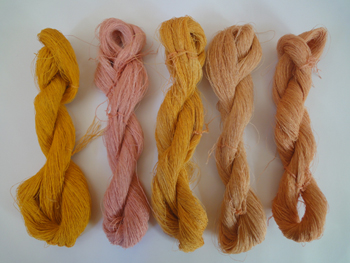Japanese Paper Yarn
Introduction:
Japanese paper yarn is made with Washi paper - slit into long, narrow ribbon-like strips and twisted.
Washi comes from the words ‘wa’- Japanese and 'shi’ - paper. Washi is commonly made using fibres from the bark of the Gampi tree, the Mitsumata shrub (Edgeworthia chrysantha), or Kozo - the paper mulberry, but also can be made using bamboo, hemp, rice, or wheat.
There are some artisans who make Japanese paper yarn by hand - paper and yarn making, weaving and to the final products.
Also machine made paper yarns are available nowadays. They are mainly made from Manila hemp.
Paper yarn is light, fuzz free and easy to dye. Also it has good ventilation, insulation, touch, etc. and it is a sustainable material.
Clothing woven with washi yarn is called Shifu.

History:
Its history goes back more than a thousand years ago. By the first half of the 20th century it was widely used in Japan and Europe as substitute for other yarn/material, although its quality was not high – low water resistance and lack of strength. In early days the yarn was mainly made with recycled paper. The method of paper yarn production in Japan and Europe was slightly different. In Japan, there were some exception which obtained very high quality and provided to the nobilities.
After the World War II, the production of cotton had been coming back and chemical fibre yarn spinning had been introduced. Then paper yarn production had been declined.
As for the machine made paper yarn, recent technology development solved these problems and made this yarn very fine and inexpensive. The possibilities of this material are big and cover not only fashion and interior but also some other products, such as building materials.